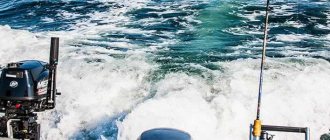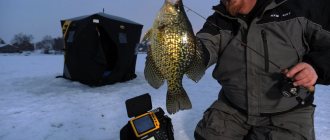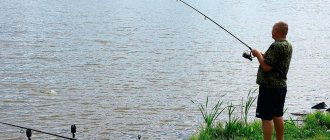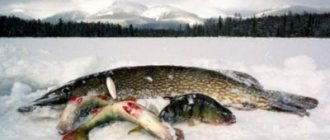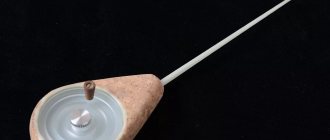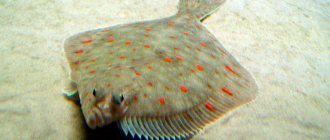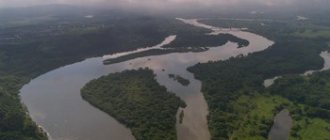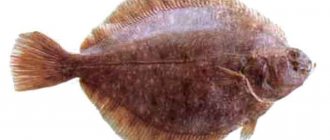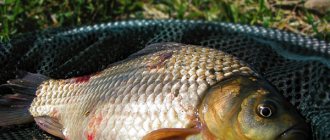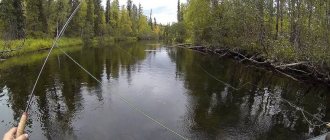Flounder fishing is very popular in coastal areas. The Black Sea, the Baltic, and the Sea of Japan are the most popular places where this type of sea fishing is common among domestic fishermen. Flounder fishing is very interesting. I know her personally. So, based on my knowledge, I will describe to you the intricacies of flounder fishing. My story is based on the experience of Far Eastern fishermen. Accordingly, we will talk about the experience of catching flounder in the Sea of Japan.
However, these methods and techniques can be safely used in the Black Sea, in the Gulf of Finland and other similar water areas where flounder is found. The main time for catching flounder is late summer, early autumn. In spring, flounder is not so common near the coasts. Mostly you come across small things, and even then - rarely. But from August, the “main forces” of flounder shoals begin to reach the shores from the distant seas. Flounder is not considered a schooling fish. Rather, it moves in separate, scattered “herds.” Due to their lifestyle and habits, typical schooling behavior is not observed when the fish approaches the bait one after another.
Rather, it turns out that a certain very vast area of water, say, a bay, is occupied by a herd of flounder, numbering several tens of thousands. Flounder is almost evenly distributed along the bottom of the bay. In some outstanding, special places on the bottom there is more of it, in others where the depths are not suitable or for some reason there are not enough shells and other food - less.
The process of catching flounder
By attracting fish to the bait with the game of bait, we collect a number of nearby flounders. We catch them. The herd is redistributed and new ones take the place of those caught. It happens that it is easier to move away from a catchable place if the bite is interrupted. It’s just that if the flounder is inactive on this day and doesn’t particularly want to move, then the bite will be weaker and we will have to wait a long time until the flounder deigns to come under our boat. We may not wait at all. Despite the general greed of sea fish, they also have periods of passivity and declines in feeding activity, and therefore in biting. Flounder habits, biting style. Flounder lies almost at the very bottom of the sea. She does not often raise her light belly from the ground. Only in order to grab some prey that was within the reach of the flounder. So, it is logical that you need to fish at the very bottom. As for the depths, I personally met flounder in areas with depths from 4-5m to 20-25m. But most often at 8-15m. It’s the most comfortable place to catch it.
Tackle for catching flounder
I prefer to catch flounder from a boat, on a vertical bottom. That's how I was taught. And in the few fishing trips that I did this kind of fishing, this method completely proved its effectiveness.
So I recommend fishing this way. Thick fishing line (0.45-0.6mm) or cord (0.15-0.22mm). A weight weighing 60-100g is knitted at the end. It all depends on the depth. Try it. The main thing is that with your gear you clearly record the moment the sinker touches the bottom and then distinguish each tap on the bottom. Two leashes with hooks are knitted. One is right next to the sinker. The second is 30-40cm higher. The length of the leashes is 15-30cm. I prefer shorter leashes of about 20-22cm made of fairly strong, thick fishing line 0.28-0.3mm. The thinner one is rather weak.
Firstly, when fishing, a flounder can twist the tackle, and by loosening the thinner leash with such twisting, it can break it and run away. Secondly, thicker rigid leashes do not get so tangled on the main line. The hooks are quite large, No. 10-14 according to domestic numbering.
There is no point in worrying too much about the quality of the hooks. All the same, they will become dull and rusty from aggressive salty sea water after 3-5 fishing trips. But it’s clear that initially you need to take sharp hooks. So, some “Cobras” will do. The shank of the hook can be medium or long – it’s not critical. All tackle can be mounted either on a primitive winter fishing rod “filly” with a reel; You can even fish using a regular plywood reel instead of a fishing rod. Such rigging options involve choosing a fishing line by hand. So, here you can only use thick monofilament. After all, if a large flounder lands on the hook, you will cut your hands with the cord. A rig based on a thick cord is wound onto a reel and fished with a short fishing rod. It is advisable to have a rod within 1-1.5m, so that the tip matches the weight of your large load. Those. They select a stick that is not very liquid, but not quite a club either. The main requirement for a reel is that you don’t feel sorry for it and that it quickly picks up the line. The bait for catching flounder in the sea is pieces of shell meat. You can also use a sea worm, sea urchin entrails, and other traditional sea baits. The piece of the nozzle should be the size of your thumbnail, or a little less. Flounder does not have such a large mouth to catch huge pieces of shell meat... Catching flounder on a vertical bottom We lower the tackle with the bait to the bottom. And vertically tap the weight on the bottom. We do not lift the tackle higher than 50-60 cm from the bottom. By hitting the sinker, we raise the mud from the bottom, which should attract our “flattened” prey.
